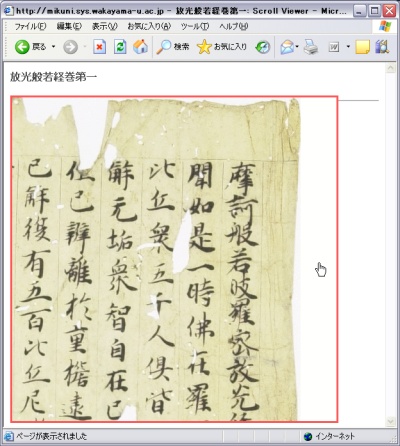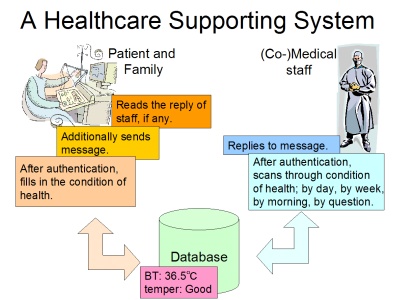
Associate Professor, Ph.D.

Before 19 October 2003 when I got married, my family name was "Tanaka". Therefore all the publications in which I was involved and written in English are under the name of "Takehiko Tanaka".
Domestically, all the applied patents are in the name of "Murakawa", and you could find my current family name in several verbal presentations and proceedings of workshops.
Since 2007, I write papers with "Takehiko Murakawa" as the author's name.
keywords: data engineering, database system, Web application
I am engaged in education and research of information and communications technology, as a member of Data Engineering Research Group with Prof. Masaru Nakagawa, Dr. Takuya Yoshihiro, Dr. Etsuko Inoue, and academic students in the laboratory.
My activities center on designing, constructing, and operating the database systems that suit the users' needs. Continually I attend a meeting outside the university to find out about people's needs and to make them enjoy the resulting software with us!
In former times, I conducted the study of information security, especially cryptographic protocols. The problem consciousness of an early date was "how to describe the objects both to make them feasible using the computers and to bring the people happiness." This is still the same.
keywords: digital archive, reading support, image processing
There are a great number of Buddhist sutras many of which were transcribed several hundred ago, in the possession of temples in Japan. As the Buddhism was propagated from India to the east, the sutras translated in Chinese have been read, handwritten, run off, and distributed around East Asia such as China, Korea, and Japan.
To make use of the contents for Buddhist study and archeology, human researchers have ever visited famous temples such as Kongoji and Nanatsudera to take shot images of the sutras using digital cameras, by permission of the general managers. Those shot images are sometimes unreadable due to degradation, and then, one takes lots of trouble with combining the split, overlapping images.
We have been developing the image processing tools for eliminating redundant part of shot images, together with the viewer which enables us to read the seamless image of sutra.
The following picture is a screenshot of an earlier version of the viewer. After a drag-and-drag operation on the sutra indicated, the view is immediately and dynamically changed, just as looking at a map over Google Maps! A student improved the user interface through his graduation research in school year 2006, so that a text area can be displayed in conjunction with the image.

keywords: digital archive, sutra database, database of individuals, full-text search
In the Middle Ages (8C-13C) of Japan, Buddhism was in full flourish; various denominations were established, elder noble people became Buddhist priests, lots of temples were set up, and Buddhist sutras were copied and stored in temples.
In those days the sutras were transcribed, because there was no printing technology. Then the colophons includes the origin of those documents. In fact, some colophons clearly state who directed, who and when handwrote, and where they were to be stored. These data help the humanities researchers investigate the human relationships and religious environment at that time.
There also exist historical materials on master-pupil relationship of priests, in the form of genealogical tables. Famous ones are put into print.
I collaborate with a humanities researcher and received enormous quality of computerized and non-computerized materials about genealogical tables of master-pupil relationships together with bibliographic data of sutras. Since the raw data are formatted in various ways (not only about file format such as Microsoft Access or Excel, but also about the table construction), we were obliged to make searching through every file separately.
To avoid the inconvenience, we have been constructing the database system which integrates those data to supply a single, user-friendly retrieving interface. Actually there were some prototypes developed which retrieve a priest and show the genealogical table with the priest on it. And then we adopt Hyper Estraier as the search engine to quickly retrieve sutra records including the characters we give.
We are now considering the database schema for the combination of human data and bibliographic records.
keywords: remote nursing-care support, health monitoring
Although Japanese "nursing-care insurance programs" began in 2000, support persons as well as medical staffs have not been free from the burden of the nursing-care. We would like to have in mind to take advantage of information and communication technology, by implementing and supplying database systems to get rid of the burden and to help them live a comfortable life.
We have actually constructed the healthcare supporting systems for aged people and for pediatric patients and their families. In these systems, the people in need of nursing care actively and regularly send the healthcare data while the medical personnel view them to make use of subsequent medical services or nursing-cares.
We promote this research project through a joint research with Wakayama Medical University, Wakayama Nursing Association and Wakayama Nursing Technical College. I am taking my share of the design and development of the database system, and of the data management during assessment experiments.

Throughout this development, we have proposed the "flash card" ("Tangocho" in Japanese) model to express daily health information in an intuitive, unifying way.
keywords: questionnaire support, statistical processing, discriminant analysis
There are so many questionnaire supporting systems for arranging questions effectively and for analyzing the answers from a variety of different angles.
We attempted to contribute to this field by providing questionnaire supporting systems for cerebral accident and for quality of working life. On cerebral accident, more than 700 replies throughout Wakayama Prefecture were broken down to find the risk factors, which confirm conventional findings of cerebral surgery.
keywords: Web application, database system, human centered design
I had engaged myself in the database systems of educational affairs, electronic commerce, and 3-D images for industrial design.
Not only the database design but also implementation were put in execution, in collaboration with staffs and students in our laboratory as well as target users who does not necessarily have good command of computers.
For about a half year from September 2005, I took in a French student, Mr. Martin Rolland, through the exchange program between University of Technology of Belfort Montbeliard in France and Wakayama University. I provided images of Buddhist canons and some research problems while he wrote several Java programs for the image process. We communicate in English, but I think it worked well since he had full patience as well as excellent linguistic ability. Moreover, he enjoyed communication with lab mates in English and in Japanese, which stimulated the whole laboratory.
Since 2004, one or two Chinese students per year joined our laboratory, so we teaching staffs have given continuous guidance. Some of them had been research students of Graduate School of System Engineering to pass the entrance examination for postgraduate course. We communicate in Japanese, and they write documents and make presentations in Japanese, although I often get the word in Chinese when they talk with each other.I use several desktop PCs and laptop PCs for servers and end-user computing.
The server computers have Linux (Ubuntu or Debian) installed. It is rare that I directly login such a server, but usually I operate on a Windows PC to connect to the server's console through SSH. Thanks to zsh and screen, I am able to enjoy the pseudo-terminal whenever or wherever necessary.
As for server software, Apache and PostgreSQL run for Web and database server, respectively. In addition, I have constructed and maintained several full-text search system where the search engine is Hyper Estraier or Senna with Ludia (PostgreSQL) or Tritonn (MySQL).
A programming language is indispensable for constructing some Web application in cooperation with the HTTP daemon and the database management system, so I like to write the programs with Ruby if it is maintained only by myself, while PHP or C is employed under collaboration with students.
I devote Windows PCs to my desktop computing life. My favorite text editor is Meadow, an Emacs-based software fitted into Windows. Instead of Command Prompt, I equip Cygwin to put shells (zsh or bash), GCC (GNU Compiler Collection), and Unix-like tools in use. Some documents are made with TeX (latex2e), and some with Microsoft Word. Other MS Office tools such as Excel and PowerPoint are also used regularly.
To share files through laboratory research, we introduced Subversion. Indeed it is intended mainly for version management, but Subversion allows us to exchange large files which we hesitate to send via e-mail.